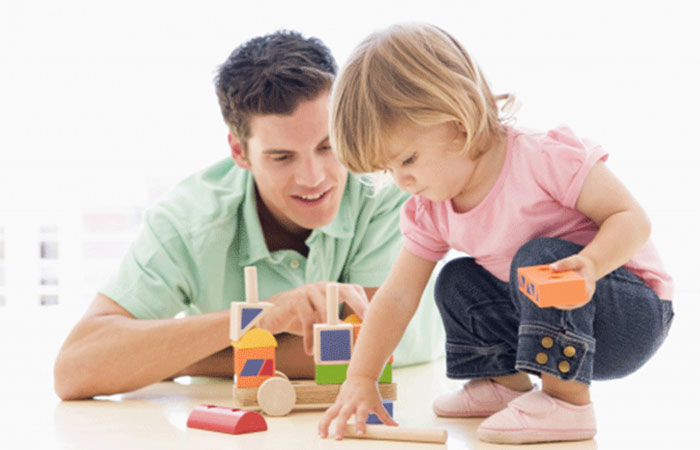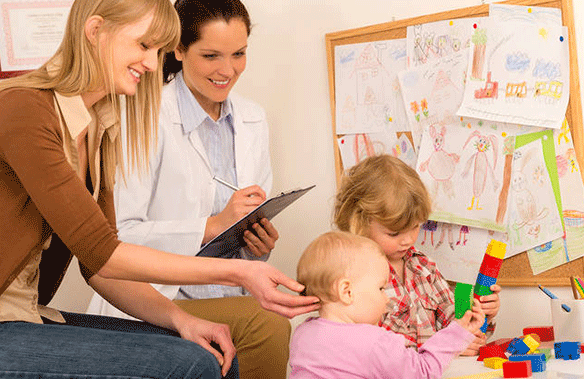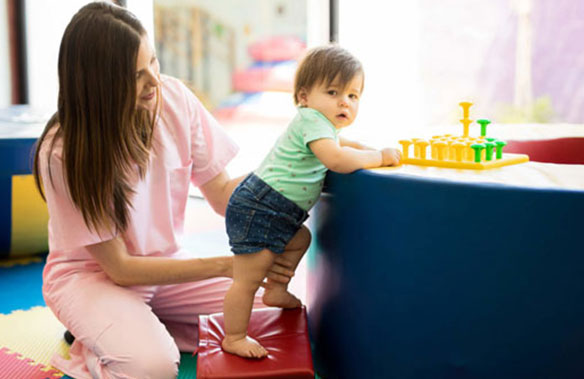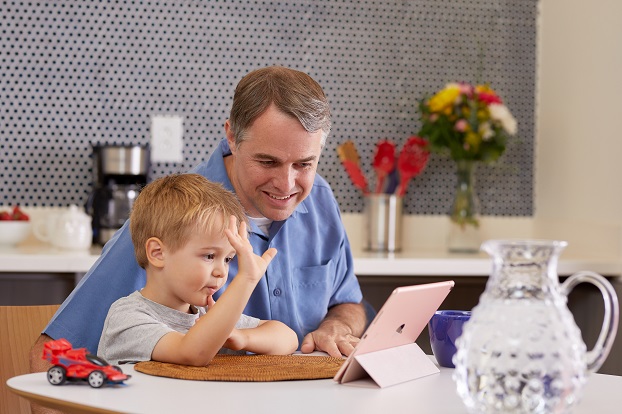
Pediatric Physical Therapy Evaluation
This initial step is designed to get to know your child and to determine your child’s gross motor skills strengths or challenges and to render a professional decision as to whether physical therapy benefit your child.
Global Developmental Assessment
TheraPlayers are adept at conducting in-depth, multi-domain assessments of your child’s strengths or challenges across multiple developmental facets (cognitive, communication, social-emotional, fine motor and adaptive). In doing so, TheraPlayers render a professional decision as to whether therapy would be beneficial to further develop your child’s overall functional skills.


Global Developmental Assessment
TheraPlayers are adept at conducting in-depth, multi-domain assessments of your child’s strengths and challenges in multiple developmental facets (cognitive, communication, social-emotional, fine motor and adaptive). In doing so, TheraPlayers render a professional decision as to whether therapy would be beneficial to further develop your child’s overall functional skills.

Pediatric Physical Therapy Treatment Program
TheraPlayers provide individualized, patient-centered treatment regimens tailor-fit to address your child’s needs, empowering family and caregivers to help the child improve, restore, and maintain optimal physical and developmental functioning.
Telehealth Services
We understand that in-person therapy is not always possible due to a parent’s busy schedule. Don’t worry! Help is still available. TheraPlayers can meet you virtually over a HIPAA-compliant therapy sessions.


Telehealth Services
We understand that in-person is not always possible due to a parent’s busy schedule. Don’t worry! Help is still available. TheraPlayers can meet you over a HIPAA compliant virtual sessions.
Milestones
TheraPlay Pediatrics is always looking forward to meeting your child’s next milestones. We can do this if we all work together. TheraPlay is here to help!
Gross Motor Milestones
Gross motor milestones are basic skills that a child demonstrates using large muscle groups in the body, such as those in the arms, legs, and torso. A child typically meets the following early milestones:
At 2-month age
- The child holds his or her head midline when being carried by you when you place one hand under the child’s buttocks and the other hand on child’s back.
- While supine, the child maintains his or her head and neck midline and can easily track a rattle that is shaken on each side of the child’s head.
- While supine, the child bends and extends his or her arms and legs smoothly to show excitement while being presented with a toy.
At 4-month age
- The child maintains his or her head, neck, and trunk midline while sitting on the floor while either being supported at the hips or by placing both of the child’s hands on the floor.
- While being supported around child’s trunk, the child can rest his or her feet on the hard surface to carry some of the child’s weight.
- While supine, the child can bring both hands together midline in an attempt to reach a rattle that is presented in front of the child.
- The child can remain in a prone position on his or her forearms with the child’s head and upper trunk not touching the arms or floor mat.
At 7 to 9-month age
- The child can maintain a ring sitting position independently on the floor mat.
- In a supine position, the child grasps both feet with hands and brings the feet towards the head.
- The child can assume and maintain a prone push-up position and bear weight on his or her palms.
- On both sides, the child can roll from its back to its tummy, then return to a supine position.
- The child can crawl forward to explore immediate surroundings.
At 10-month age
- The child may transition from a supine position to a sitting position on a floor may (while possibly holding a stable object for support).
- The child may transition from sitting on a floor mat to a standing position by grasping a study object for support.
- The child may takes side steps while holding on stable object or furniture.
- The child may slowly transition from standing next to a stable object to sitting down on a floor mat.
- The child may transition from sitting on a floor mat to a quadruped position or prone on hands and knees.
- The child may creep forward on hands and knees to explore immediate surroundings.
At 12-month age
- The child maintains balance in independent standing.
- The child independently transitions from sitting on a floor mat to standing.
- The child takes some alternating-step patterns with one hand assistance.
At 13 to 14-month age
- The child starts to take independent steps.
- From independent standing, the child slowly lowers body weight to squat and picks-up a toy on the floor and then returns to standing.
- The child creeps up and down the stairs.
At 18-month age
- The child walks up and down the stairs with one hand holding on the rail.
- The child starts to demonstrate heel-toe walking pattern.
At 20 to 24-month age
- The child can jump at least 4-inches forward with 2-footed take-off and landing.
- The child can maintain balance while standing on one leg while kicking a playground ball.
- The child can throw a tennis ball forward.
At 27-month age
- The child can jump down from a 7-inch high stool using 2-footed take-off and landing.
At 30-month age
- The child maintains an upright posture while standing on one leg.
- The child can walk up and down the stairs with alternating step pattern and one hand holding the rail.
- The child runs at least 30 feet distance without stopping.
At 34 to 36-month age
- The child jumps more than 20-inches forward using 2-footed take-off and landing.
- The child can jump over a 2-inch hurdle using 2-footed take-off and landing.
- The child can catch a playground ball with hands and arms.
- The child can pedal a tricycle.
- The child can stand on one leg at a time while donning/doffing a pair of shorts.
